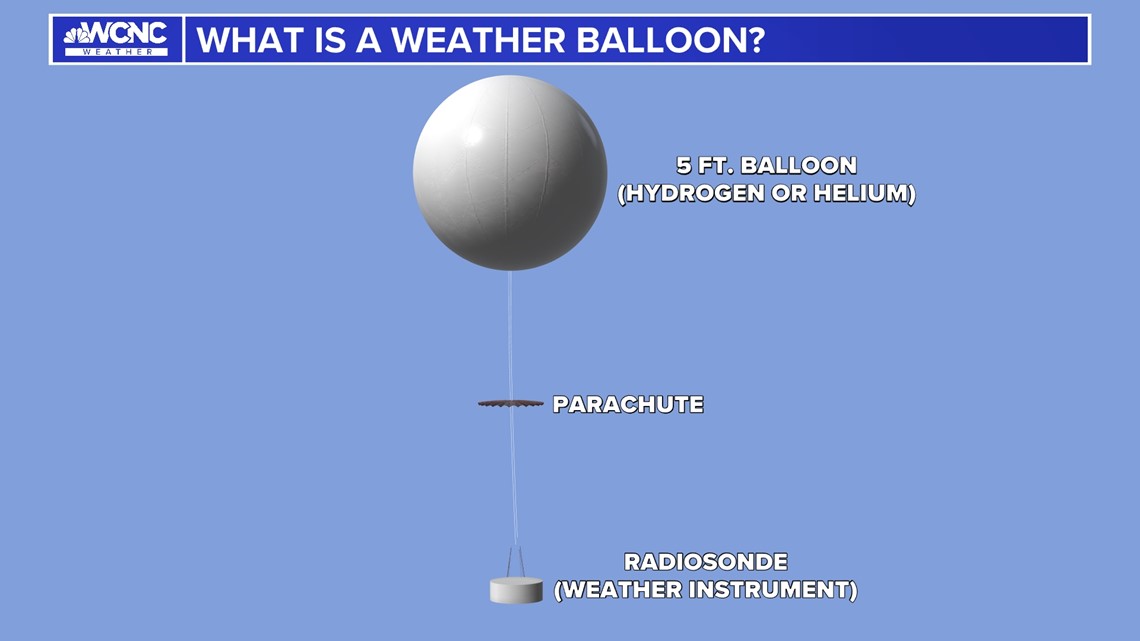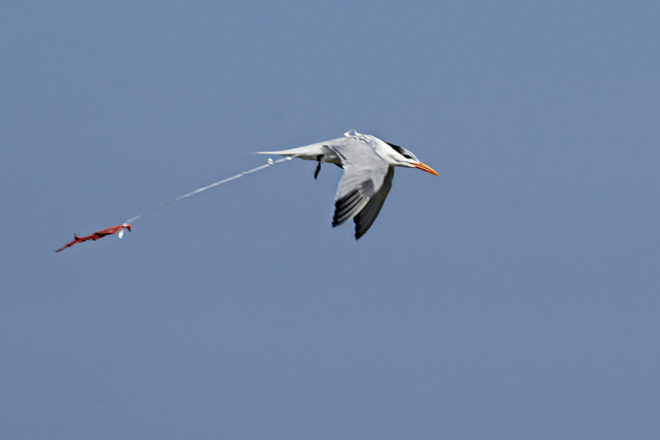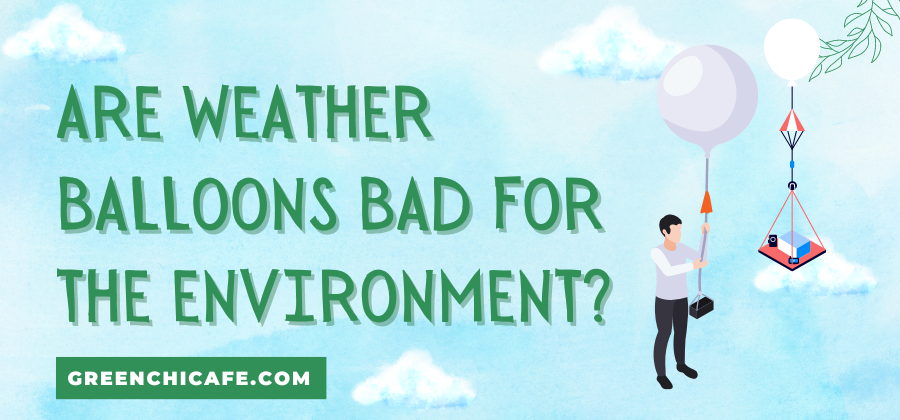Last Updated on June 3, 2024 by Annie Baldwin
Weather balloons provide critical data on atmospheric conditions, but their plastic materials contribute to pollution.
This article explores the environmental impact of these ubiquitous scientific tools.
Are Weather Balloons Bad for the Environment?

Weather balloons contribute to plastic pollution and can be harmful to wildlife, so they do have negative environmental impacts.
However, they provide vital weather data needed to predict storms and track climate change.
More eco-friendly options should be developed.
Key Points
- Weather balloons use latex which biodegrades slowly and plastic/metal parts that don’t degrade
- Balloons can be mistaken as food and ingested by wildlife, causing harm or death
- Balloons contribute to plastic pollution levels in the environment
Our Opinion
While weather balloons provide important climate data, their environmental impact cannot be ignored.
We believe more sustainable options should be explored, such as balloons made with natural biodegradable materials.
However, until better alternatives are found, weather balloons are a necessary evil.
What Are Weather Balloons?

Weather balloons are inflated with helium and released twice daily across the globe. As they ascend through the atmosphere, onboard instruments transmit measurements of temperature, humidity, and pressure. This data feeds weather prediction models and informs meteorologists.
Most weather balloons are made of latex or plastic like mylar. They expand to over 20 feet wide before bursting around 20 miles up. The collapsed materials then fall back to Earth.
While vital for weather monitoring, these balloons have some downsides:
- Latex and mylar are slow to biodegrade and persist in ecosystems.
- Balloons can entangle wildlife on land and sea.
- Animals may mistake balloon fragments for food and ingest them.
However, new biodegradable latex and plastic polymers show promise for reducing balloon pollution in the future.
Do Weather Balloons Pollute the Environment?

There is no doubt that the plastic from weather balloons contributes to environmental pollution. However, their impact is complex and depends on several factors.
Over 10 million weather balloons are launched globally per year. Most burst into the atmosphere, but some land intact and become litter. Latex degrades slowly, persisting in ecosystems. Mylar is even more durable, taking decades to break down.
Entanglement and ingestion risks pose threats to wildlife. Birds can become entangled in balloon strings or mistake fragments for food. Sea turtles ingest balloons, blocking their digestive tracts. However, quantitative data on such incidents is limited.
The biggest variable is balloon recovery rates. Systems to track and retrieve balloons keep waste out of the environment. For example, over 95% of radiosondes in Europe are recovered through transmitter tracking.
While we must continue critical weather monitoring, balloon pollution can be mitigated through biodegradable materials, efficient recovery, and proper disposal. With care, their environmental impact can be reduced.
How Do Weather Balloons Impact Wildlife?

Weather balloons can negatively impact wildlife in a few key ways. Most notably, balloons and their remnants pose entanglement and ingestion hazards to animals.
Birds are particularly susceptible to entanglement in the strings and attachments of weather balloons. This can lead to injury or death. There are documented cases of seabirds becoming ensnared in balloon ribbons and unable to break free.
Ingestion of balloon fragments is another issue. Sea turtles and other marine life often mistake pieces of burst balloons for food. This can block their digestive tracts or accumulate toxins in their bodies over time.
Quantifying the full extent of balloon impacts on wildlife is challenging. However, studies have found weather balloon debris in the stomachs of deceased animals. The data highlights the need for proper recovery and disposal.
While essential for meteorological monitoring, steps must be taken to minimize the environmental footprint of weather balloons. Biodegradable materials, tracking systems, and cleanup efforts can all help reduce their hazards to animals.
What Is the Environmental Impact of Balloon Debris?
The debris from burst weather balloons can have numerous negative environmental impacts beyond just wildlife entanglement and ingestion.
Latex balloons are made of a form of plastic and can take years to fully biodegrade. As they break down into smaller fragments, they contribute to the buildup of microplastics in the environment.
These balloon particles make their way into waterways and oceans, where they are consumed by marine life and work their way up the food chain. There is evidence microplastics from balloons accumulate in fish tissues.
Chemicals used to manufacture balloons, such as pigments and plasticizers, can also leach out as the material degrades. This introduces toxins and pollutants into ecosystems.
In addition, lost or improperly disposed of balloons contribute to litter on land and beaches. This is not only unsightly but can be harmful if animals try to eat the debris.
Proper handling and cleanup after weather balloon launches is crucial. Some communities have enacted balloon release bans to curb environmental damage. Overall, increased awareness and improved practices can lessen the footprint of balloons.
How to Reduce the Environmental Impact of Weather Balloons
There are several ways we can mitigate the environmental footprint of weather balloons.
First, use biodegradable latex or natural rubber instead of plastic film balloons. These degrade much faster and do not introduce microplastics.
Second, avoid attachments like strings, clips, or ties that could entangle wildlife. Instead, use lightweight clips that will detach upon bursting.
Retrieve balloons promptly after landing to prevent litter and ingestion hazards. Consider using radio trackers or GPS to aid recovery.
Launch balloons sparingly, and only when wind conditions are favorable to minimize drift. Avoid releases near wildlife areas or waterways when possible.
Finally, dispose of balloons and any instruments responsibly after use. Recycling facilities may accept latex balloons. Never release balloons intentionally.
With some mindful practices, the environmental risks of weather balloons can be greatly reduced. We all must do our part to protect ecosystems from unnecessary plastic waste.
FAQ
Are Weather Balloons Eco-Friendly?
No, weather balloons are generally not considered eco-friendly. While modern balloons use biodegradable latex, they can still persist in the environment for a long time. The metal and plastic parts are also not biodegradable.
Which Balloons Are Worse for the Environment?
Mylar or foil balloons are generally considered the worst for the environment. They do not biodegrade at all and can persist for years. Latex balloons are better, but still take a long time to break down.
Are Latex Balloons Bad for the Environment?
Yes, latex balloons can have negative environmental impacts. While latex is biodegradable, it still takes at least 6 months to break down. The latex and strings can be harmful to wildlife in the meantime.
What Happens to Used Weather Balloons?
Used weather balloons eventually float back down to Earth. The latex balloon degrades over time, but the plastic and metal parts persist in the environment. These can be hazardous to wildlife and contribute to plastic pollution.
Conclusion
Overall, weather balloons do have some negative environmental impacts and cannot be considered eco-friendly. The latex degrades slowly while the plastic and metal parts do not biodegrade at all. Weather balloons contribute to plastic pollution and can be harmful to wildlife when ingested. More sustainable options should be explored.
